

Here are some of the favorite control-line model airplanes of Pacific Northwest. For the latest additions to the galleries, see the Favorite Planes main page.

Mike Haverly of Auburn, Wash., finished his second Shrike for the 2010 season. It's powered by a Ro-Jett .65. Finish is Randolph dope over Poly Span with two-part automotive clear coat. Mike Haverly photo.

Pete Cunha of Gallup, N.M., sent this picture of his Buccaneer, designed by Alan Brickhaus. It's powered by a Ro-Jett .51 with tuned pipe, finished with Sig dope. Pete Cunha photo.
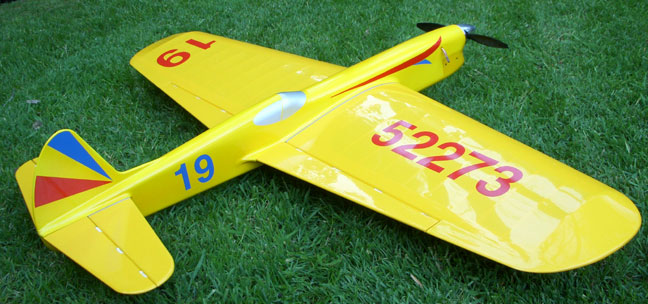
Don McClave of Portland, Ore., built this Mackey Lark in spring 2010. This is a different airplane than the Southwick Lark that Bruce Hunt flies. Mcclave's Lark weighs 42 oz. and is powered by an Aero Tiger .36. Don McClave photo.
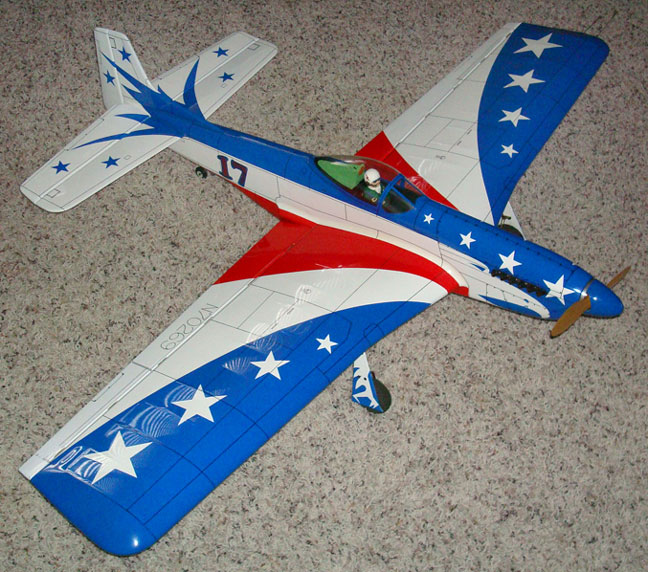
In 2009, Gerald Schamp of Albany, Ore., acquired one of the semi-scale Mustang stunters built by Pat Johnston of Boise, Idaho. He did some restoration work (look at that shine!) over the winter and powered it with a Leonard Neuman Magnum .53. Gerald Schamp photo.

Hube Start of Abbotsford, B.C., recently completed this Vector 40 ARC, done in silkspan and Brodak Pitts Red, powered by a SuperTigre 46 and 11x6 APC prop. Hube Start photo.
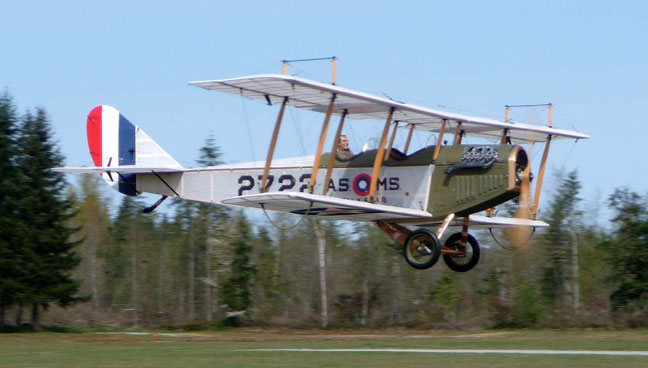
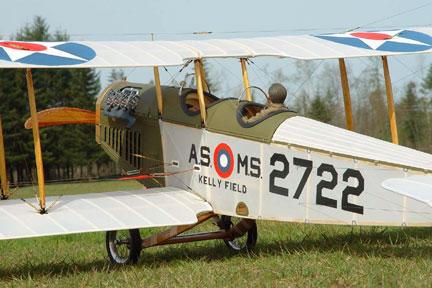 John
Witt of Edmonds, Wash., built this scale Jenny JN4-D2, in 2010. It's
built from a Proctor kit, 1400 sqare inches of wing area, 87-inch wingspan,
powered by an 1,800-watt Turnigy electric motor swinging a 17 scimitar blade
prop. The pilot with the big smile is Capt. Eddie Rickenbacker. The wire
rigging is functional and adjusted with scale turnbuckles. It's a big, slow
and lazy flier, and now has about an hour of flight time on it. Photos
provided by John Witt.
John
Witt of Edmonds, Wash., built this scale Jenny JN4-D2, in 2010. It's
built from a Proctor kit, 1400 sqare inches of wing area, 87-inch wingspan,
powered by an 1,800-watt Turnigy electric motor swinging a 17 scimitar blade
prop. The pilot with the big smile is Capt. Eddie Rickenbacker. The wire
rigging is functional and adjusted with scale turnbuckles. It's a big, slow
and lazy flier, and now has about an hour of flight time on it. Photos
provided by John Witt.
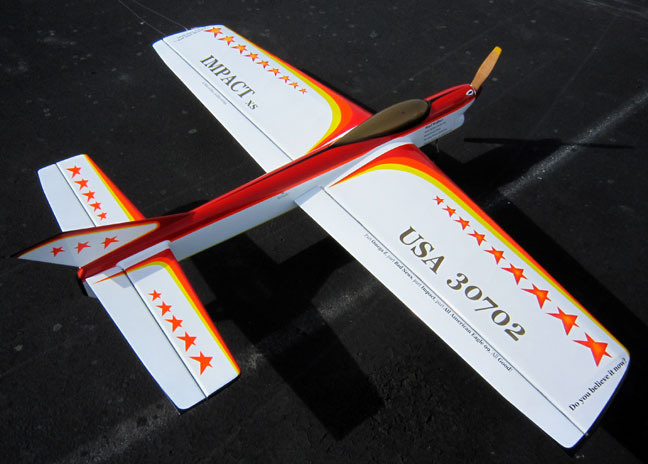
Paul Walker's 2010 airplane is the Impact XS. It's powered by Plettemberg 25-14, Shultze 18.46F2B ESC, Thunder Power 4000 5S2P "cube" batteries. It has a wing area of 650 square inches and weighs 61.8 oz. Paul Walker photo.
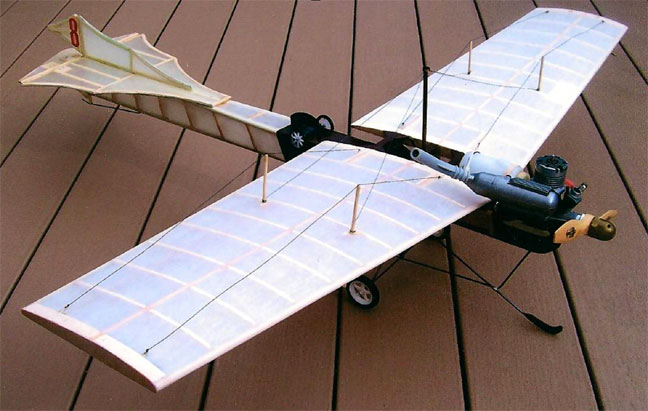
Bill Darkow of Tenino, Wash., and Walt Russell of Auburn, Wash., are building a series of planes to re-enact the Great International London to Paris Air Race of 1910, featured in the movie "Those Magnificent Men in their Flying Machines." This plane is the a 1909 Antoinette flown by the Englishman who wins the race in the movie. Power is a throttled-down O.S. .25. Bill Darkow photo.

Bill Darkow of Tenino, Wash., and Walt Russell of Auburn, Wash., are building a series of planes to re-enact the Great International London to Paris Air Race of 1910, featured in the movie "Those Magnificent Men in their Flying Machines." This plane is the one flown by the character Orville Newton in the movie. It's a Curtiss named The Phoenix Flyer in the movie but it's really a replica of the 1910 Bristol Boxkite. The model is a 1/12 scale with a 32-inch wingspan and 35-inch length. Power is a throttled-down O.S. .25 swinging an 8x6 pusher prop. Bill's wife, Caroline, made the pilot's flying outfit. The model is all spruce except for the ribs. Bill plans to add rigging after test flights. Bill Darkow photo.
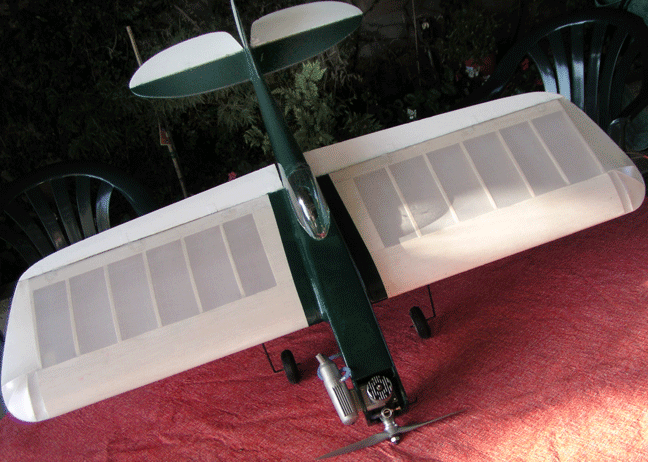
Rex Abbott of Sequim, Wash., likes the Fancy Pants because it fits in the trunk of his sports car. He has built 3.5 of these, including the one above powered by an O.S. .25. This one is scratch built. Rex Abbott photo.
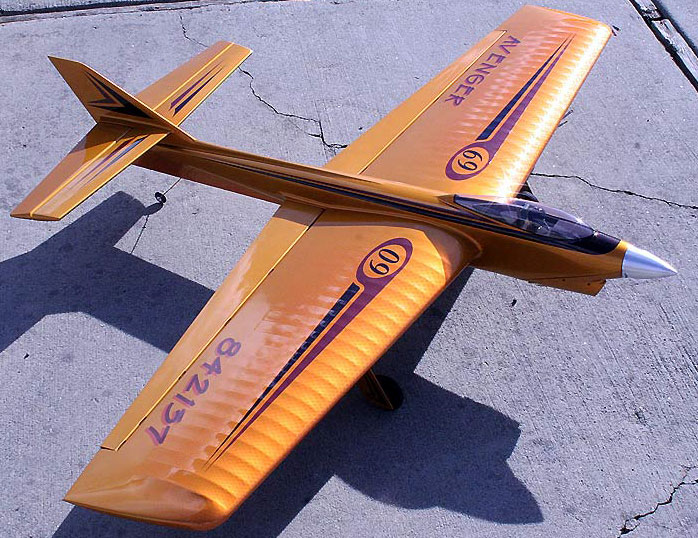
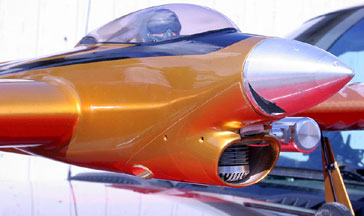
Mark Scarborough of Pullman, Wash., built this 1969 Avenger, designed by Don Shultz, for Classic Stunt. It has 640 Square inches and is powered by a Magnum .53. Mark reworked the structure in Autocad and Pat Johnston cut the parts by laser. Mark Scarborough photos.
This page was upated June 7, 2010